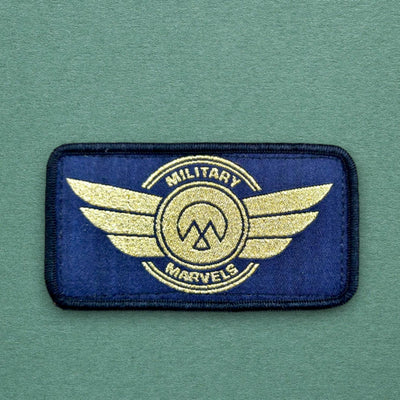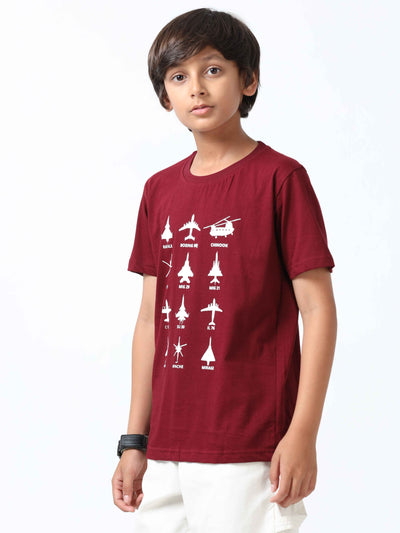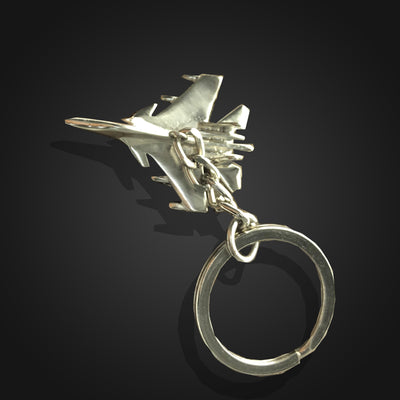Non-Refundable

Mind-Blowing Facts About the Indian Air Force?
Share
The Indian Air Force (IAF) is not just a powerful military branch; it's an institution that has played a pivotal role in shaping the history and defense of India. With a legacy of valor, innovation, and technological advancement, the IAF is a force to be reckoned with. Here are some mind-blowing facts about the Indian Air Force that highlight its significance and achievements.
1. Fourth Largest Air Force in the World
The Indian Air Force is the fourth largest air force globally, following the air forces of the United States, Russia, and China. With over 1,700 aircraft and more than 140,000 personnel, the IAF stands as a formidable force in the sky.
2. The Legendary “Mighty Hunter”
The IAF operates the Sukhoi Su-30MKI, one of the most advanced fighter jets in the world. Known as the "Mighty Hunter," this multi-role air superiority fighter is the backbone of the IAF's combat fleet. The Su-30MKI is capable of carrying a wide range of missiles, including the BrahMos, the world's fastest cruise missile.
3. The Only Air Force to Engage in a Full-Scale War after World War II
The Indian Air Force is the only air force in the world to have engaged in a full-scale war after World War II. The IAF played a crucial role in the 1971 Indo-Pak war, leading to the creation of Bangladesh. The IAF's successful airstrikes on key Pakistani installations were pivotal in the outcome of the war.
4. Operation Safed Sagar: A Game-Changer
During the Kargil War in 1999, the IAF conducted Operation Safed Sagar, the first air operation conducted at such high altitudes. The IAF's precision airstrikes at altitudes of over 18,000 feet were instrumental in neutralizing enemy positions, marking a significant achievement in the history of aerial warfare.
5. The IAF's Contribution to Space
The Indian Air Force has been an integral part of India's space endeavors. IAF's pilots have been trained as astronauts, with Wing Commander Rakesh Sharma becoming the first Indian to travel to space in 1984 aboard the Soviet spacecraft Soyuz T-11. His iconic words, "Saare Jahaan Se Achha," when asked about how India looked from space, still resonate with pride.
6. Women in the IAF: Breaking Barriers
The Indian Air Force has been at the forefront of gender equality in the armed forces. In 2016, the IAF inducted its first batch of female fighter pilots, making India one of the few countries in the world to allow women in combat roles. As of now, women in the IAF fly fighter jets, helicopters, and transport aircraft, proving their mettle in the skies.
7. Indigenous Advancements: The Tejas Fighter
The IAF has been a driving force behind India's push for self-reliance in defense technology. The HAL Tejas, an indigenously developed light combat aircraft, is a testament to India's growing capabilities in aerospace technology. The IAF has already inducted several squadrons of Tejas, showcasing the nation's technological prowess.
8. The Garud Commando Force
The IAF is not just about aerial superiority; it also boasts an elite special forces unit known as the Garud Commando Force. Trained in counter-terrorism, combat search and rescue, and hostage rescue, the Garud Commandos are the IAF’s answer to any ground-based threats, making them a versatile and deadly force.
9. IAF's Role in Humanitarian Missions
The IAF has always been at the forefront of humanitarian missions, both within India and internationally. Whether it's disaster relief during floods, earthquakes, or cyclones, the IAF’s transport aircraft and helicopters have been instrumental in providing aid and evacuating civilians from danger zones. The IAF's contribution during the 2004 Tsunami and the 2015 Nepal earthquake are particularly noteworthy.
10. The Red Flag Exercise: Training with the Best
The Indian Air Force regularly participates in international exercises to hone its skills and improve interoperability with other air forces. One such exercise is the Red Flag exercise held in the United States, one of the most advanced air combat exercises in the world. The IAF's participation and performance in these exercises have been highly praised, showcasing the skill and professionalism of its pilots and ground crew.
Conclusion
The Indian Air Force is more than just a branch of the military; it's a symbol of India's strength, innovation, and commitment to defending its skies. With its rich history, cutting-edge technology, and a future focused on self-reliance, the IAF continues to inspire awe and respect, not just in India but across the world. These mind-blowing facts are just a glimpse into the incredible world of the Indian Air Force, a force that truly embodies the motto "Touch the Sky with Glory."
Show Your Pride with Indian Air Force-Themed Apparel
If these mind-blowing facts about the Indian Air Force have inspired you, why not show your pride with some exclusive Indian Air Force-themed products? At Military Marvels, we offer a unique collection of Indian Air Force jackets and Military Patches that allows you to wear your respect for the IAF on your sleeve—literally!
Whether you're a fan of the iconic Su-30MKI or want to honor the brave pilots who have served our nation, our collection has something for everyone. Our products are designed with the highest quality materials and attention to detail, ensuring you can represent the IAF with style and pride.
Explore our indian army tshirt -themed products today at Military Marvels and join a community of enthusiasts who celebrate the valor and legacy of the IAF.

Touch the sky with glory—wear it with pride!
Q&A: Mind-Blowing Facts About the Indian Air Force
Q: How large is the Indian Air Force compared to other air forces in the world?
A: The Indian Air Force is the fourth largest air force globally, following the United States, Russia, and China, with over 1,700 aircraft and more than 140,000 personnel.
Q: What is the Sukhoi Su-30MKI, and why is it significant?
A: The Sukhoi Su-30MKI, known as the "Mighty Hunter," is a multi-role air superiority fighter and the backbone of the IAF's combat fleet. It's one of the most advanced fighter jets in the world and is capable of carrying a wide range of missiles, including the BrahMos.
Q: Has the Indian Air Force engaged in any full-scale wars?
A: Yes, the IAF is the only air force in the world to have engaged in a full-scale war after World War II. The IAF played a crucial role in the 1971 Indo-Pak war, leading to the creation of Bangladesh.
Q: What was Operation Safed Sagar?
A: Operation Safed Sagar was the IAF's operation during the Kargil War in 1999. It was the first air operation conducted at such high altitudes (over 18,000 feet), where the IAF's precision airstrikes were instrumental in neutralizing enemy positions.
Q: How has the Indian Air Force contributed to space exploration?
A: The IAF has been integral to India's space endeavors. Wing Commander Rakesh Sharma, an IAF pilot, became the first Indian to travel to space in 1984 aboard the Soviet spacecraft Soyuz T-11.
Q: Are women allowed to fly fighter jets in the IAF?
A: Yes, in 2016, the IAF inducted its first batch of female fighter pilots, making India one of the few countries in the world to allow women in combat roles.
Q: What is the Tejas fighter, and what is its importance?
A: The HAL Tejas is an indigenously developed light combat aircraft, representing India's growing capabilities in aerospace technology. The IAF has inducted several squadrons of Tejas, showcasing the nation's technological prowess.
Q: What is the Garud Commando Force?
A: The Garud Commando Force is an elite special forces unit of the IAF trained in counter-terrorism, combat search and rescue, and hostage rescue. They are versatile and capable of handling ground-based threats.
Q: How has the IAF contributed to humanitarian missions?
A: The IAF has been at the forefront of humanitarian missions, providing aid and evacuating civilians during natural disasters like floods, earthquakes, and cyclones, both within India and internationally.
A: The Red Flag exercise is one of the most advanced air combat exercises held in the United States. The IAF regularly participates in this and other international exercises to improve skills and interoperability with other air forces.




